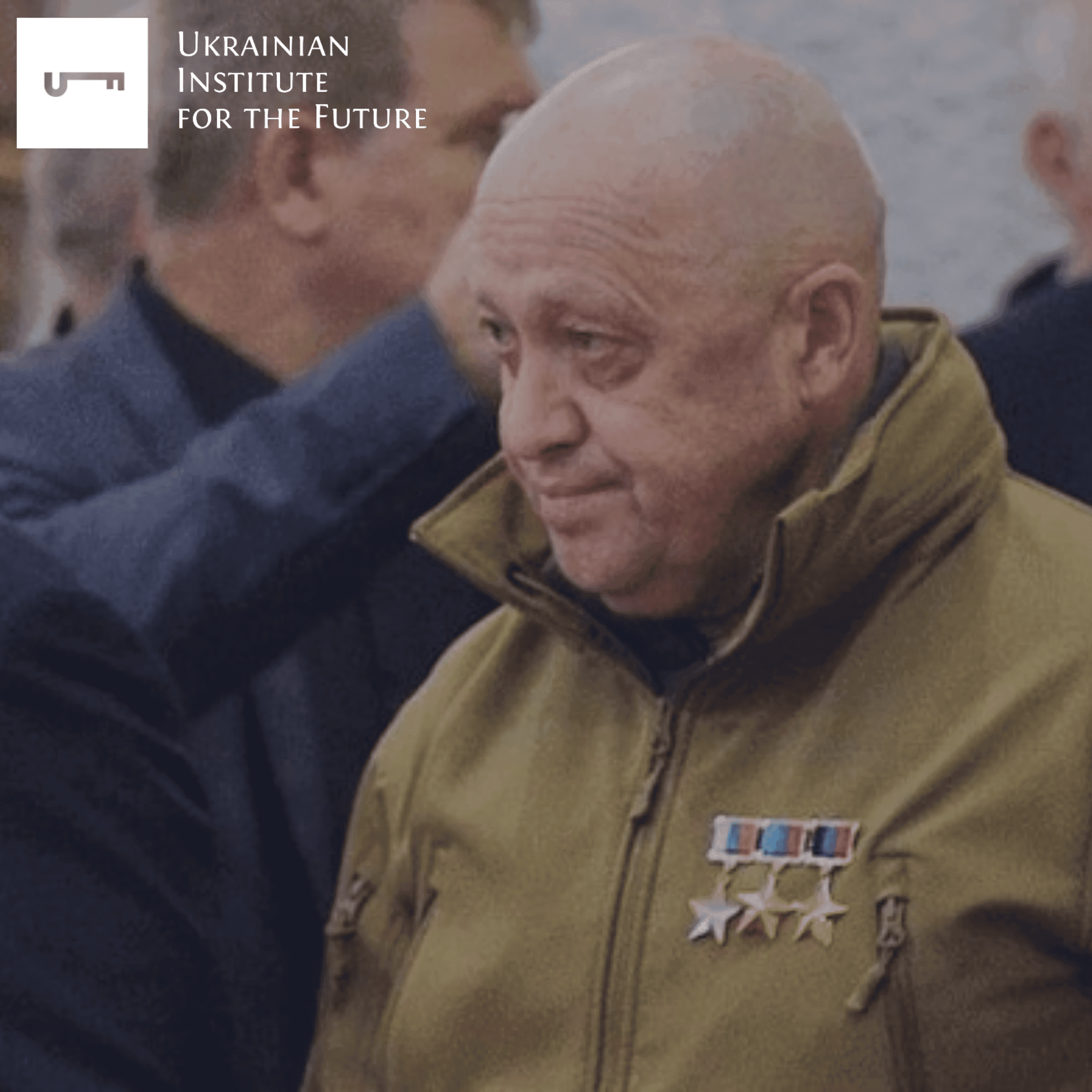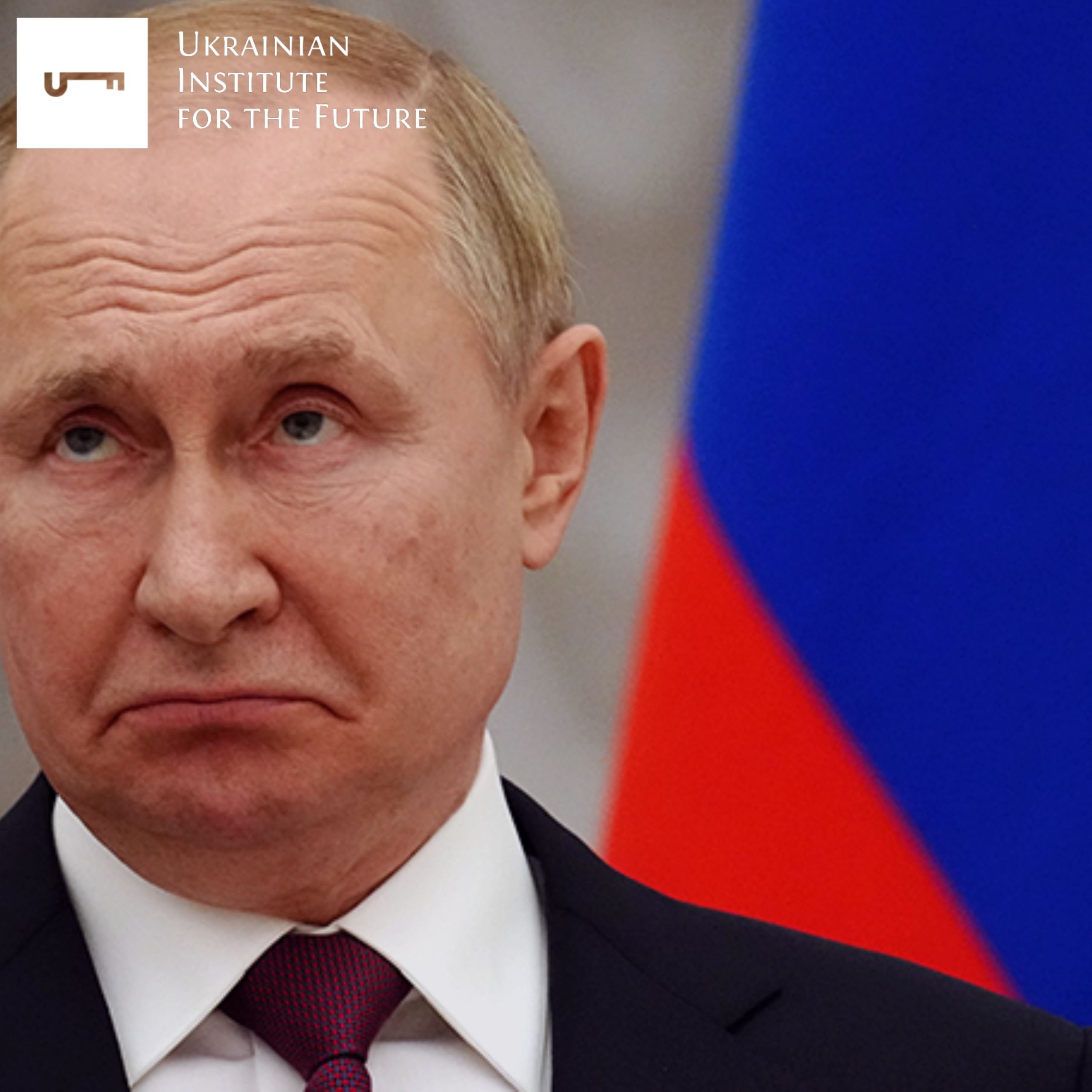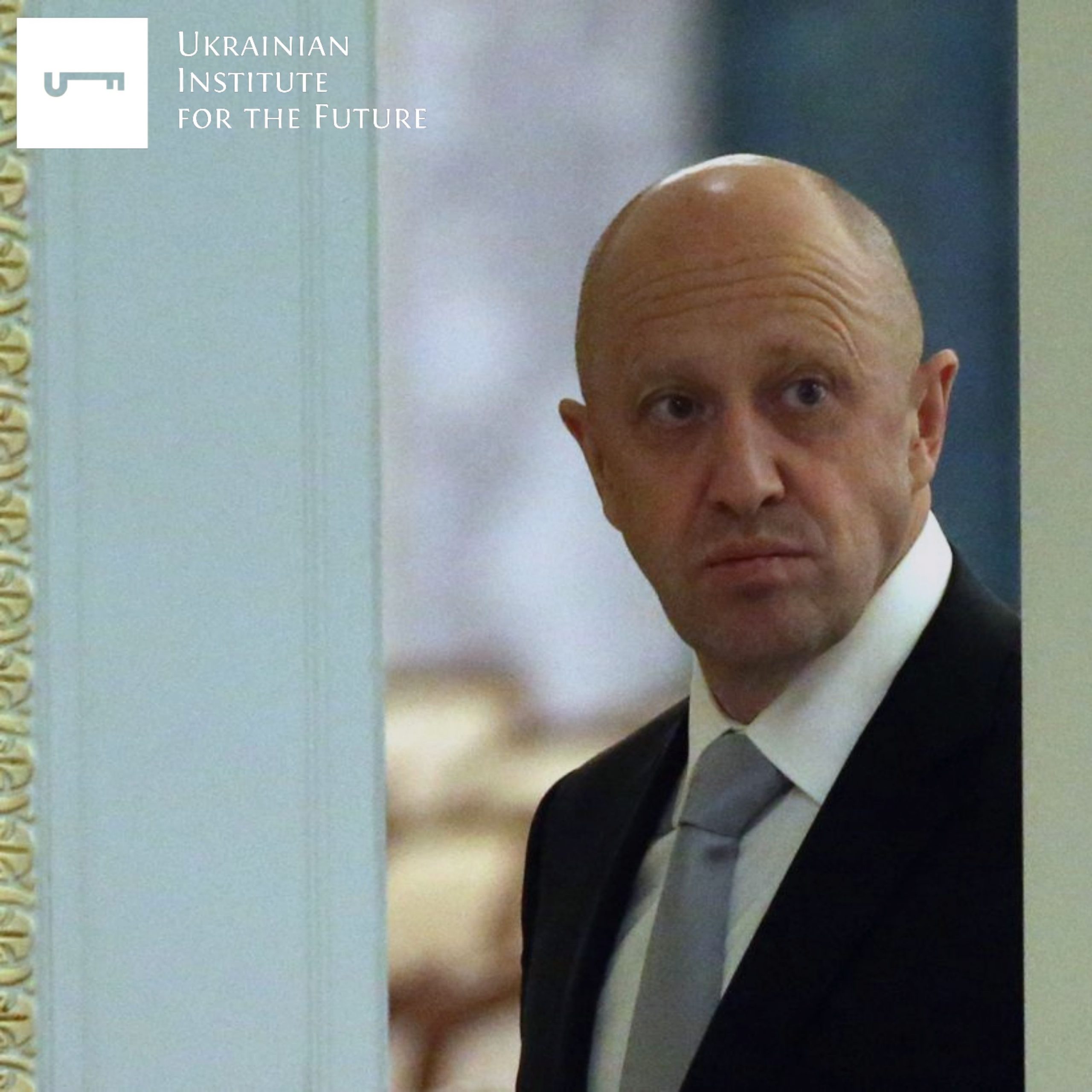Several Russian Telegram channels reported on the meetings between Yevgeny Prigozhin and Igor Sechin that took place in March. Allegedly these were about Rosneft’s support for Wagner Group and its related structures. However, there was no confirmation from the meeting’s participants, no special details, or a list of discussed topics. At the same time, such a dialogue may seem logical, given the current role of both Prigozhin and Sechin in the Russian elites. In this regard, it makes sense to analyze the situation and outline possible areas of cooperation.
Background or a few facts about the “partners”
To understand why Sechin and Prigozhin may well create a tactical alliance, it is worth paying attention to their business and political activity over the past few years. Details about the business structure, interests, and position of these figures can be found in the report of the Ukrainian Institute for the Future, “Kremlin Towers: Who Will Share Putin’s Legacy”.Below is a brief description.
Rosneft-Lukoil Group
Sechin is one of the key players in the “Kremlin Tower” created around the Rosneft company. Moreover, this group of elites can be called “Sechin’s group”. It strengthened in 2001-2003 when Putin started monopolizing the oil market. After the takeover of Yukos, Rosneft, which until then was a “second-tier player” in the list of Russian producers and exporters, became a crucial company in the oil market. Since then, the personal influence of Igor Sechin has increased dramatically. So did the role of Vagit Alekperov, the owner of the Lukoil company, which since the mid-00s, has turned from a potential competitor into the leading partner of Rosneft.
At the turn of 2013-15, Sechin was Miller’s main competitor for increasing influence on domestic politics. Moreover, by analogy with Gazprom, Rosneft wanted to get the pipeline system (oil pipelines) under its complete control. But instead, Alexander Novak, who returned to Transneft, received a seat on the board of directors in Rosneft itself.
After that, one could expect a weakening of the positions of the Sechin group, but the defeat did not happen since Rosneft remained the central “Kremlin Tower” in communication with Western politicians and business circles. For this reason, Gerhard Schroeder and several other retired European politicians got a place in its structure. Nevertheless, the group’s position in the domestic political field has been weakening for the last five years. Rosneft has lost most of its “Duma deputies, ” who have moved to other camps, and has lost control over several key regions.
In addition to the above, Rosneft (like Lukoil) works outside the Russian Federation. Moreover, the emphasis is on crude oil and gas (in the calculation to compete with Gazprom). Structures associated with Sechin are actively mining precious metals and conducting exploration for minerals (primarily rare earth elements) in the conflict zones. A typical example in the post-Soviet space is gold mining in Nagorno-Karabakh, which was run by GeoProMining, owned by Sechin’s partner Roman Trotsenko. Another striking example is the attempt to gain control over the oil fields in Syria, where one can find companies associated with Rosneft (but not Rosneft itself). The Americans’ well-known defeat over the Wagner Group unit is connected precisely to an attempt to “take under protection” deposits in the American zone of control.
But, the most promising area for Rosneft and Lukoil is Africa. Moreover, Rosneft’s business is divided into three areas:
- Profile and official – oil and gas production under agreements with the local government in states with a stable situation. These are, for example, Egypt (Rosneft, Zarubezhneft, and Lukoil), Nigeria, the Republic of the Congo, Cameroon (Lukoil)
- Profile in areas of instability. Or work through partner companies. These are Ivory Coast (Lukoil), Mozambique (Rosneft), Sudan (front companies associated with Sechin), Libya (Tatneft with the support of Rosneft)
- Non-core activities in areas of instability – exploration and production of other minerals through partner firms or through the creation of a local intermediary. These are Mozambique, Madagascar, the Central African Republic, and Zimbabwe (although here, Russians are being forced out by Chinese business).
In most of these regions, the physical protection of specialists and defence of fishing or reconnaissance sites is relevant. This function has been entrusted to various Russian PMCs and Rosneft’s own security service for the past 6-7 years.
However, despite the above, Sechin’s group is now going through a period of crisis. Against the backdrop of restrictions on the trade of Russian oil on the European market and a general deterioration in the level of political contact between the EU and the Russian Federation, the functionality of Rosneft as a bridge communicator with Western elites loses its meaning. The conditional “weight” of Sechin in Putin’s entourage is also falling. The collapse of oil and oil products trade revenues only accelerates this process. As a result, the rest of the Kremlin Towers are trying to launch an attack on the Rosneft system. Sechin is rapidly losing “his” people in the regions (over the past three years, the number of governors under his control has decreased from 6 to 2) in the Duma and in the government.
Prigozhin
Yevgeny Prigozhin, unlike Igor Sechin, does not have his own “Kremlin Tower”. He is instead Putin’s “guarantor” – used for “delicate” missions, which both official structures and individual politicians can not handle. Prigozhin is called upon to do the “dirty work” and take on all the negative reputation. At the same time, his position ultimately depends on the demand for the offered “delicate services” and Putin’s favour.
More details about the history of the emergence and strengthening of Prigozhin and his struggle for his position are described in the analytical piece by the Ukrainian Institute for the Future, “How long will Yevgeny Prigozhin last?”. Here is a summary of the key points.
In recent months Yevgeny Prigozhin has been perceived only as one of the direct participants in the war in Ukraine. His scope of interests and assets is much wider:
- In particular, Prigozhin owns the Patriot media group, which became a logical development of his AI (Olginskietrolls), which later grew into the Federal News Agency (FNA). In addition to the FNA itself, the mentioned media group includes about 40 resources, some of which could be positioned as “Ukrainian”. The function of Prigozhin’s structures in the information field is to influence neighbouring states and to conduct information operations. Until 2022 the primary function (in the domestic field) was discrediting Putin’s political opponents. The target group of Patriot resources is people who draw a significant part of their information from social networks and Telegram. Finally, the promotion of the Russian information agenda on the wars waged by the Russian Federation. A significant part of the “correspondents” and “streamers” of Crimea’s annexation stage and the beginning of the war in the Donbas were employees of Prigozhin’s structures. Today, the media group “Patriot” controls at least 20% of the so-called military correspondents covering the course of the war from the Russian side.
- Prigozhin’s PMC (Wagner and other associated groups) is active in Africa. In this case, we are not always talking about the power component. For example, a business trip of political technologists to Madagascar to ensure the results of the presidential elections that Russia needs is recorded. But the main component remains the power component – Wagner Group guards Russian companies in the region, trains soldiers for local groups, and fights in several states on the continent. Examples include CAR, Mali, Sudan, Libya, DR Congo, and Mozambique.
- Prigozhin owns the Concord group of companies. In Russia, this company is associated with catering and construction. In Africa, companies related to the group are engaged in mineral exploration and extraction. At the same time, at the stage of reaching industrial volumes, they often “give way” to other Russian structures, including those associated with Rosneft.
The failures in the Russian war in Ukraine allow Prigozhin to strengthen his positions. Among the main options:
- Enter into one of the “Kremlin Towers” as a full participant in charge of part of the system. Here, the functionality of the PMC and Prigozhin’s attempts to “fit” it into the system of the Russian power bloc come to the fore. This means the creation of a third (second – the National Guard) counterbalance to the army within the “group of security forces”. Naturally, securing a place for himself no longer as a guarantor but as a full-fledged representative of an influential group.
- Use the Kremlin’s need to create a new political project (right-wing) to neutralize the radical-imperial part of society. This option looks much worse than joining an influence group since the parties in the Russian Federation are rather decorative. But this is still better than the “guarantor” functionality since it guarantees a stable passage to the Duma and, as a result, the possibility of gaining control over 1-2 regions. That in itself can be a good launching pad for further strengthening.
With this reasoning, Prigozhin created and then supported a wave of criticism of the army leadership through controlled media resources. By his actions (for example, public executions), he provoked other departments, such as the Federal Penitentiary Service, the Sledkom, the FSB, and the Prosecutor’s Office. As a result, he achieved a change in the Special Military Operation’s leadership and advanced his project of recruiting prisoners.
Nevertheless, despite receiving a significant resource, Prigozhin could not give Putin a picture of “victory”. The assaults in the Bakhmut direction were only partially successful: Soledar was taken, and there was an advance of 5-15 km in the Bakhmut area. But all this happened in three months and was accompanied by colossal losses in human power.
In light of Prigozhin’s failures, the army leadership and several other key people in the power bloc began to pursue their policy of neutralizing the ambitions of Wagner Group’s owner. Apart from the problems with the supply was the concentration of some media outlets on the excessive losses of the Wagnerites during the onslaughts on Bakhmut and Soledar. If in the fall of 2022, Prigozhin was able to create an “image of those responsible for the defeat” for the army leadership, then today, the same image (or the image of the one “guilty of the offensive failure”) is being created for him.
Moreover, there has been a general acceptance of the idea of interweaving PMCs as a natural part of the power bloc of the Russian government. But its implementation is happening in such a way that neither Prigozhin nor any other character could “monopolize” it:
- Already existing PMCs are artificially supported and declare their separateness from Wagner Group.
- The creation of new paramilitary groups takes place in several directions, ranging from the “army” companies surrounding Shoigu and ending with the creation of PMCs at large corporations or the reform of corporate security services.
Two troubled people, one problem
Both Prigozhin and Sechin faced the challenges of losing their influence. Moreover, the prospects for both look alarming, and if urgent action is not taken, then:
- Prigozhin will remain capable of working as a military contractor in conflict zones. He risks losing control over part of his media group and the opportunity to earn money on exploration and mining in conflict zones.
- The “Sechin Group” today is one of the weakest “Kremlin towers,” and it risks being destroyed with the future division of assets between the Gazprom-Novatek group and, for example, rising technocrats.
In light of this, meeting the mentioned persons and achieving certain agreements on mutual support looks quite logical. Among the most likely areas of dialogue are:
- Africa. Rosneft, against a weakening position within the Russian Federation, is looking for additional functionality, such as a critical Russian player in Africa, the Middle East, and South America. It seems quite logical to strengthen interaction with the Wagner Group. On the one hand, these are security issues; on the other hand, entry into Prigozhin’s business to explore and produce minerals. First, uranium, titanium, and lithium, the Russian Federation’s shortage is already critical. Prigozhin, in this scheme, ensures the safety of his “exploration” business. Importantly, it retains the core of its PMC without throwing high-class fighters to the front in Ukraine under the pretext of increasing the load on protecting the assets of Russian companies abroad.
- Media in exchange for personnel. The biggest weakness of the “Sechin group” is the failure to control the media field. In the “assets” of this “Kremlin Tower,” there is only V. Alekperov’s “Russian media group”. At the same time, Prigozhin controls the media group “Patriot”, which is quite influential today. Prigozhin’s weakness in participating in “big Russian politics” is the absence of a “bench”. “Chef Putin” does not have sufficient managers dependent on him, and there is no system for training personnel. At the same time, Rosneft and Lukoil, ten years ago, began to create a system for training the next generation of Russian politicians through corporate leadership programs. But their format could not stand the competition with the system of a group of technocrats and remained unclaimed. In this regard, a tactical alliance is possible where Sechin and Rosneft receive media support and, in return, help Prigozhin retain control over his media assets and allow him to train personnel at least at the level of regional politicians.
- Rosneft’s PMCs. Currently, in Russia, there is a process of active creation of private military companies based on state structures and corporations. At the same time, even in connection with the war, there are statements that large Russian companies can “take care of air defense at their facilities themselves.” Against this background, Sechin is highly interested in reforming and scaling the Rosneft security service. Prigozhin is interested in having a “friendly to him” PMC.
But the theme of war can be called the key direction in a possible tactical alliance between Prigozhin and Sechin. For the Russian elites, fixing their direct participation in the “Special Military Operation” – whether it be issues related to hostilities or managing the occupied territories – is becoming a prerequisite for further growth and strengthening. Due to his, for Sechin, public (or any other) assistance to Prigozhin is a demonstration of involvement and participation in the war against Ukraine. For Prigozhin, gaining the support of the Kremlin Tower, albeit lost in influence but still firm, is an opportunity to continue the struggle to strengthen his position in Putin’s circle.
Thus, one should not discount the possibility of creating a tactical alliance between Sechin and Prigozhin. For both, this is an opportunity to hold their positions at least today and, at the most, to strengthen by the end of 2023.




